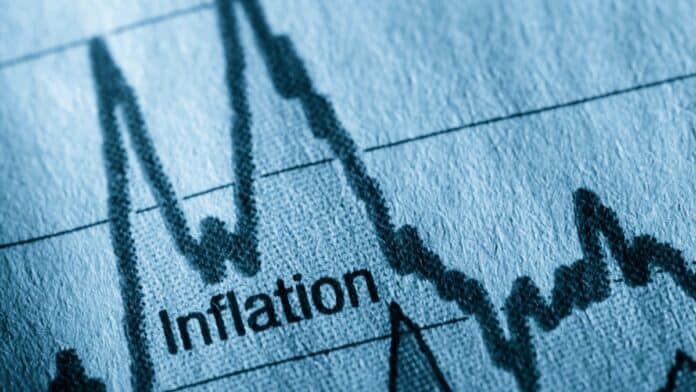Prices in the Northeast continued rising in January 2025, with the Consumer Price Index for All Urban Consumers (CPI-U) increasing 0.8 percent for the month.
This brings the total price increase over the past year to 3.7 percent.
Most of this came from higher housing, energy, and food costs, which continue to put pressure on household budgets.
According to the U.S. Bureau of Labor Statistics, the report includes states like Connecticut, Maine, Massachusetts, New Hampshire, New Jersey, New York, Pennsylvania, Rhode Island, and Vermont.
One of the biggest reasons for the increase was the category that excludes food and energy, which also rose 0.8 percent in January.
In fact, this category made up more than 70 percent of the total price hike.
Housing costs were a major part of this, with shelter prices rising 0.6 percent over the month.
More specifically, rent and homeowners’ equivalent rent—an estimate of what homeowners would pay if they were renting—both increased by 0.4 percent.
Over the past year, shelter costs have gone up 5.3 percent, and rent prices, including homeowners’ equivalent rent, are now nearly 6 percent higher than last January.
Energy costs also saw a sharp rise, jumping 2.8 percent in January alone.
Electricity prices were the biggest factor, increasing 3.7 percent for the month, while natural gas service costs rose 2.3 percent.
Gasoline prices also edged up by 1.1 percent.
However, energy prices have increased by 3.1 percent in the past year.
Natural gas service has seen the largest jump, skyrocketing 13.7 percent since last January, followed by electricity, which climbed 7.2 percent.
Conversely, gasoline has dropped by 2.7 percent over the year, providing a little relief at the pump.
Food prices also went up, but not as much as energy or housing.
Overall, food prices rose 0.5 percent in January.
Grocery store prices, or food at home, increased by 0.7 percent, with certain items becoming noticeably more expensive.
Some of the biggest price hikes were in eggs, carbonated drinks, and fresh seafood.
Meanwhile, eating out became slightly more expensive, with food away from home prices increasing by 0.2 percent.
Over the past year, food prices have gone up 2.0 percent.
While restaurant prices have increased 3.4 percent, grocery store prices have risen at a slower rate of 1.2 percent.
Among grocery items, meats, poultry, fish, and eggs had the biggest jump, climbing 5.3 percent over the year.
Aside from food and energy, other everyday expenses also became more costly.
Clothing prices jumped 2.8 percent in January, making shopping for new apparel more expensive.
Recreation costs, which include entertainment and hobbies, rose 1.5 percent.
Medical care costs also increased by 0.9 percent over the month.
These price hikes all contributed to the 4.1 percent annual increase in the category that excludes food and energy, with shelter costs playing the biggest role in the yearly rise.
It’s important to understand that the Consumer Price Index measures how prices change over time for a typical set of goods and services.
The Northeast CPI is updated monthly and tracks trends across the nine states in the region.
Unlike some economic reports, this data does not account for seasonal changes, which means that things like winter energy demand or holiday shopping could influence month-to-month increases.
Looking at a specific area within the Northeast, the Philadelphia-Camden-Wilmington region had a slightly different inflation trend.
Prices in this area remained unchanged over the past two months, but they were still 3.3 percent higher than they were a year ago.
Food prices in this region rose 0.5 percent in November and December 2024, mainly because of a 0.9 percent increase in restaurant prices, while grocery costs rose by a smaller 0.2 percent.
The biggest grocery price increases were in nonalcoholic beverages, which climbed 5.0 percent, and cereals and bakery products, which went up 3.8 percent.
However, not all food prices increased—fruit and vegetable prices dropped by 4.1 percent, helping offset some of the overall food cost increases.
Energy prices in the Philadelphia area moved in the opposite direction compared to the Northeast as a whole.
Over the past two months, energy prices in this region dropped 1.0 percent, mainly due to a 3.3 percent decline in gasoline prices.
Electricity costs also dipped slightly by 0.5 percent, though natural gas service prices increased by 1.9 percent.
Over the last year, total energy costs in this region declined by 0.3 percent, driven by a 9.6 percent drop in gasoline prices.
However, electricity prices increased by 9.2 percent, and natural gas service costs climbed by 5.8 percent, meaning that energy savings weren’t spread evenly across all categories.
Meanwhile, the category excluding food and energy in the Philadelphia area fell by 0.1 percent over the past two months.
This was largely due to falling prices for household furnishings, recreation, and medical care.
However, shelter costs increased by 0.3 percent during the same period, mostly due to higher rent prices and lodging costs, such as hotels.
Over the past year, this category has risen 3.6 percent, with shelter prices being the biggest contributor.
The next inflation report for the Northeast is scheduled for release on March 12, 2025.
Many people will be keeping an eye on it to see if prices continue to rise or if inflation starts to slow down.
With housing and energy prices staying high, it’s hard to predict if inflation will slow down soon or if consumers will keep feeling the strain.





